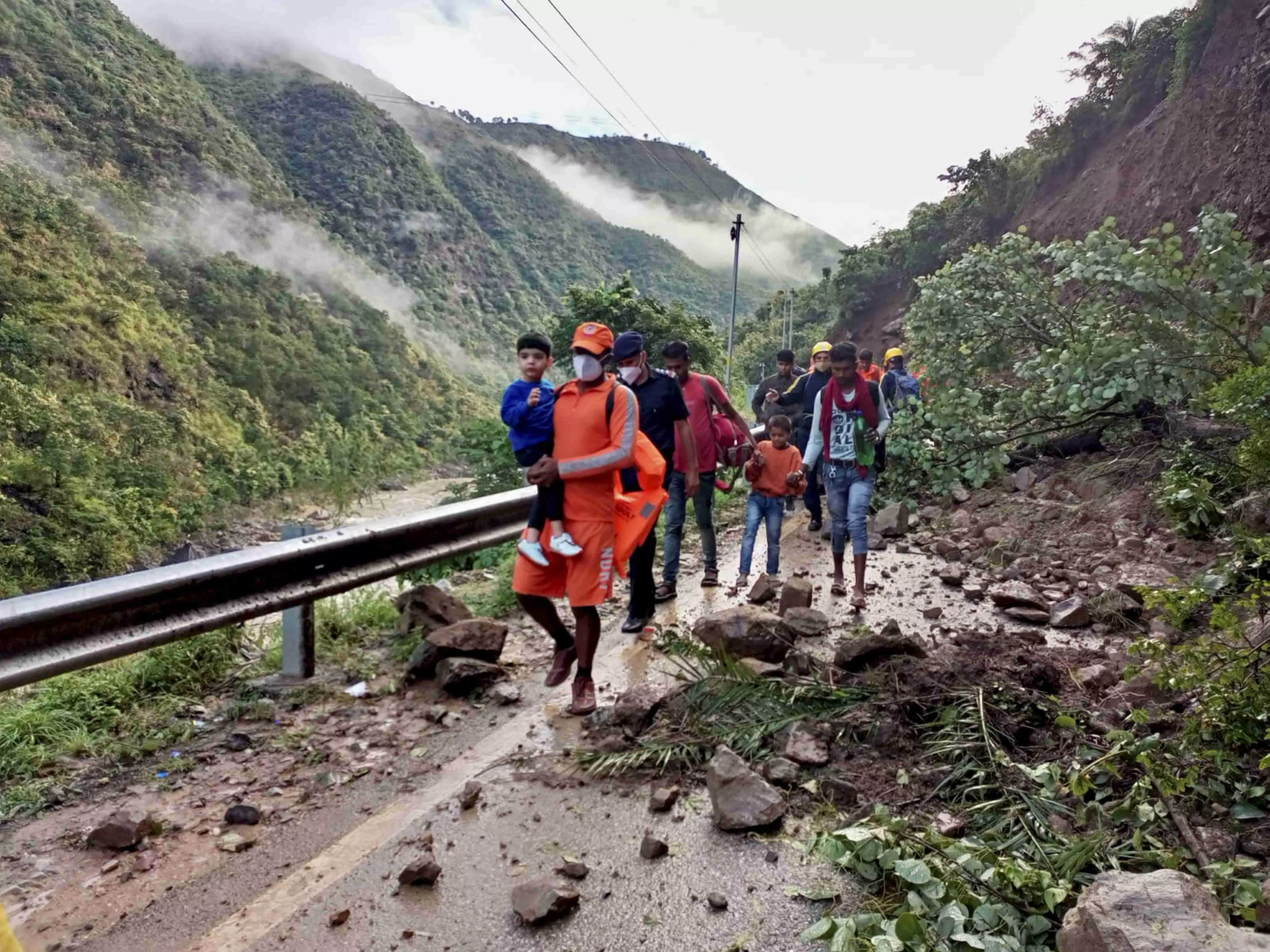Descending into turmoil
The utter disregard for scientific warnings and protocols, coupled with reckless tourism, has pushed the fragile Himalayas into the realm of recurrent disasters — necessitating urgent course-correction

In Uttarakhand, 74 people died and around 37 sustained injuries due to rain-related incidents this monsoon. New rainfall records were broken every week in August. Roads were blocked, schools were closed, ready-to-harvest vegetable crops had been destroyed, tourists and pilgrims were being rescued … the economy came in shambles. It became critical to reduce risk, save lives, provide immediate relief to victims, and prepare for the worst. At a different time, a few decades ago, the disaster in the Himalayas would have been declared a national tragedy. Relief and aid would have poured in from across India.
Unfortunately, these days, the increasing frequency and intensity of such disasters has resulted in general disinterest and apathy that is evident in the national media coverage as well. The Indian Meteorological Department (IMD) has clarified that disasters caused by cloudbursts are common in the Himalayan region during the June-September monsoon season. Climate experts have pointed out that the Inter-Governmental Panel on Climate Change (IPCC) reports have given ample warnings about the rapid increase in extreme weather-related events as a result of global warming. Geologists have reiterated that the entire Himalayan region is unstable, tectonically alive, and environmentally fragile even without human interference. Land mass movement, such as creeping, uplift, subsidence, faulting, fracturing, slope failures, and landslides, is commonly observed in the region. The administration is quick to reiterate all of the above to point fingers and cover their corruption, ineptness, and lackadaisical attitude that caused the disasters in the first place.
In what must be one of the worst Independence Day tragedies, another bout of incessant rains in the foothills of the Himalayas left over 60 dead in Himachal Pradesh, destroyed crores worth of infrastructure and property, and left hundreds of people and cattle trapped in various low-lying villages on the banks of rapidly rising Yamuna River. Angry residents blame New Delhi for the destruction in the name of so-called development. They point to dams, the Char Dham highways, and the newfound wealth of local politicians. The truth is that the Himalayas is one of the most rapidly urbanising mountain ecosystems in the world, with a rise of almost 33 per cent in built up area by some estimates. More than 60 per cent of this construction is of poor quality, and is visibly concentrated in environmentally unsafe zones, particularly landslide and flood-prone areas.
In the last decade, even comparatively inaccessible areas have seen rapid urbanisation to cater to domestic tourism, directly resulting in encroachment into forests, disruption of natural drainage, and cutting and deep excavations on hill slopes to erect buildings and infrastructure, all of which have increased the frequency of landslides to dramatic proportions. The hill stations must develop a comprehensive action plan for sustainable tourism based on socio-ecological carrying capacity. New Delhi must declare a moratorium on all dam building, road widening, and forest-cutting activities in the Himalayas. Science, not greed should be at the foundation of all future construction activity in the Himalayas. Instead of scientists and engineers approving design and construction, we have politicians and contractors calling the shots on where to dig, what to blast, and build poor-quality buildings in unsafe settlements. The encroachment, obstruction, and obliteration of natural drainage channels have increased the vulnerability of the slopes to geo hydrological risks, putting most towns under the threat of repeated landslides and mass movements.
Despite their denials, there is no doubt that the tunnelling and blasting for the construction of hydropower projects, the widening of roads, and the phenomenal increase in buildings on the fragile slopes, can and will severely trigger the inbuilt tectonic instability of the mountain ecosystem. All of this is known; however, policy-makers are reluctant to accept a glaring and dangerous truth: combined human activities have stressed the Himalayas close to their limit.
The future of these fragile and overpopulated mountain towns is in the hands of their citizens. Now that the disaster has passed, and people have started rebuilding, citizens must demand a detailed and large-scale risk-zone mapping of all towns, under the parameters of environment, geology, geomorphology, demography, economy and livelihood, infrastructure, and services. Local self-governments must make it mandatory to include disaster risk reduction and Climate Change adaptation in all urban development plans.
Views expressed are personal



